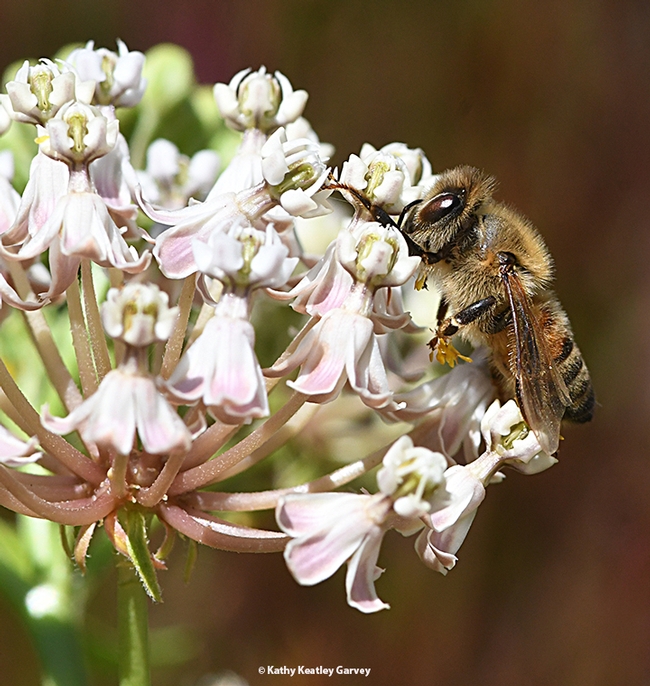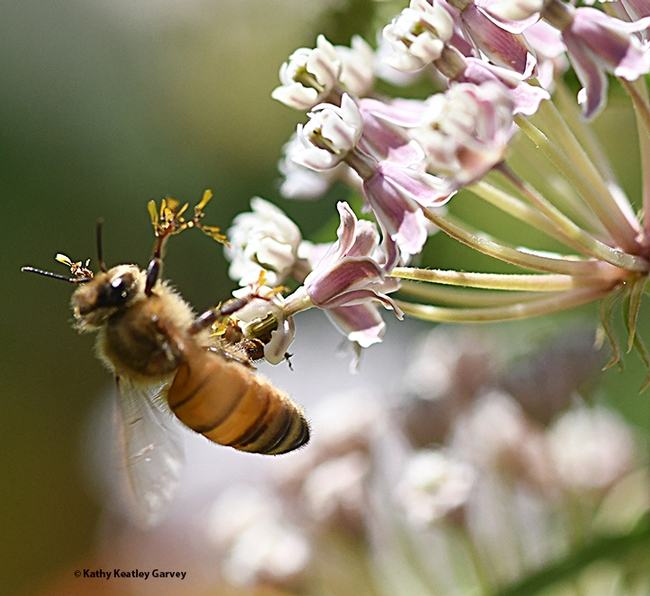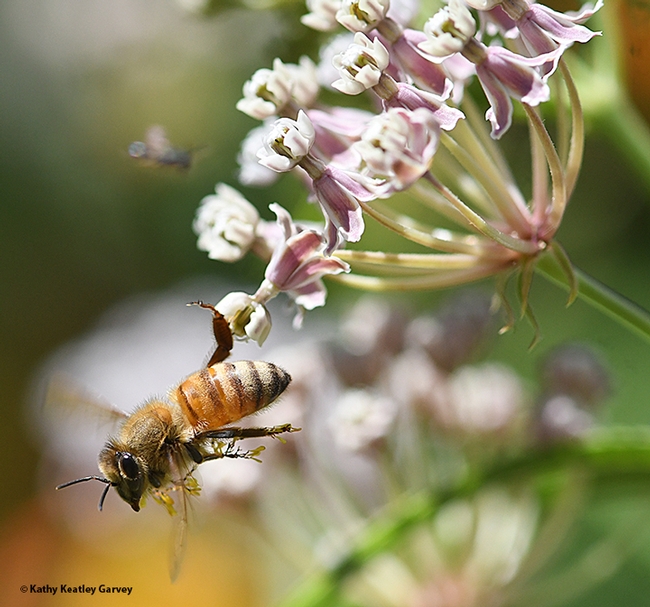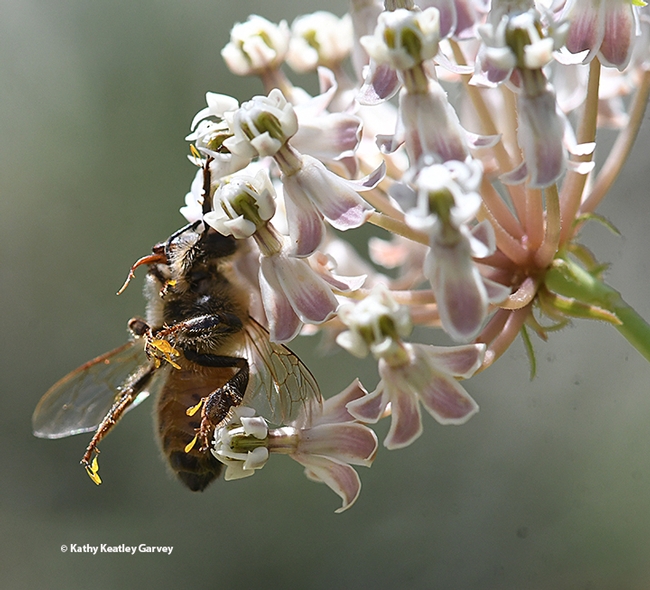It is not a "pretty sight," as Ernest Hemingway might have said, to see a honey bee stuck like glue--nature's "gorilla glue?"-in the reproductive chamber of a milkweed.
It's a trap, a floral trap.
If you've never seen this, this is how it works: milkweed produces pollinia, a sticky structure or packet of pollen grains originating from a single anther (male part). During the flower's complex pollination process, the mass is transferred as a single unit and looks like a yellow wishbone dangling on a honey bee's legs or other parts of her anatomy. It's a devious way for the milkweed to force insects to help them reproduce--in exchange for the sweet nectar reward. (Orchids produce pollinia, too.)
Oh, the nectar is so enticing! Honey bees (and other insects) literally make a bee-line for the it. They buzz and bump around as they await a vacancy. The scenario almost calls for crowd control or at least traffic lights.
But it's a trap, a floral trap. Sometimes you'll see frenzied bees struggling to free themselves from the sticky nectar trough. They are not always successful. Return to the scene of the grime and you'll see insect parts or whole insects trapped in the sticky mass. Dead.
The two honey bees below experienced different fates on this narrow-leafed milkweed, Asclepias fascicularis. One managed to free her leg from the grip of the milkweed reproductive chamber and return to her colony, complete with the precious nectar--and legs intact. The other did not. The meal was her last.
Attached Images:

A honey bee stuck in milkweed pollinia. This plant is the narrowleaf milkweed,Asclepias fascicularis. (Photo by Kathy Keatley Garvey)

A honey bee struggles to free herself from the sticky nectar trough of a milkweed plant, Asclepias fascicularis. (Photo by Kathy Keatley Garvey)

Almost free! A honey bee works to free herself from the sticky nectar trough of a milkweed plant, Asclepias fascicularis. (Photo by Kathy Keatley Garvey)

Death trap: This bee couldn't free herself from the sticky milkweed blossom of a Asclepias fascicularis. (Photo by Kathy Keatley Garvey)